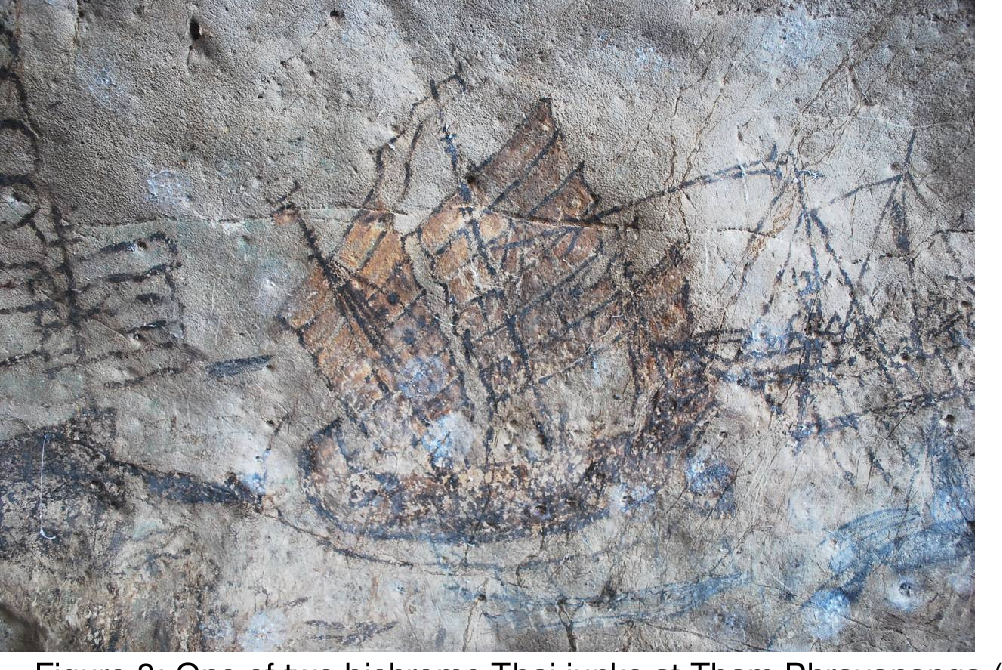Picture yourself standing in the lush forests of Thailand, surrounded by towering limestone cliffs. As you soak in the natural beauty of the landscape, your eyes are drawn to something unexpected – ancient rock art, etched into the very stone that stands before you. These stunning paintings and engravings, created by ancient inhabitants of Thailand, hold countless secrets and mysteries waiting to be unraveled. In this article, we will delve into the world of Thailand’s ancient rock art, exploring its significance, uncovering its origins, and shedding light on the stories that these ancient artworks tell. Get ready to embark on a journey through time, as we unlock the secrets of Thailand’s enigmatic past.
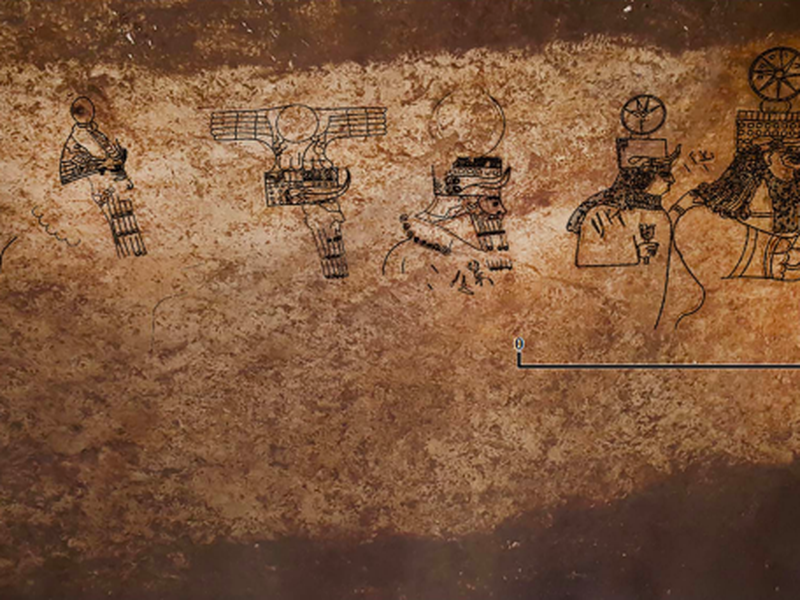
Thai Rock Art: A Journey through Time
Throughout the vast landscapes of Thailand, hidden within caves and cliffs, lies a treasure trove of ancient rock art. These intricate and enigmatic creations offer us a glimpse into the rich cultural and historical tapestry of the region. From the symbolism and meaning behind the depictions to the challenges of preservation and the role of rock art in Thailand’s tourism, this article will take you on a journey through the significance, discovery, exploration, preservation, and global heritage of Thailand’s ancient rock art.
The Significance of Thailand’s Ancient Rock Art
Thai rock art holds immense significance in understanding the history and traditions of the indigenous communities that once thrived in the region. These incredible artworks, through their depictions of animals, humans, and abstract symbols, provide insights into the daily lives, spiritual beliefs, and artistic expressions of our ancestors. Moreover, they serve as a bridge between the past and present, connecting us to the cultural heritage that has shaped the identity of Thailand.
The Discovery of Thailand’s Rock Art
The first discovery of Thailand’s rock art dates back to the early 20th century when explorers stumbled upon caves adorned with ancient paintings and carvings. Since then, numerous rock art sites have been unearthed across the country, revealing a diverse range of styles and techniques used by the artists of the past. With each new discovery, historians, archaeologists, and art enthusiasts are enchanted by the secrets waiting to be unraveled.
Exploring the Different Styles and Techniques Used in Thai Rock Art
A captivating aspect of Thai rock art is the remarkable variety of styles and techniques employed by its creators. From the intricate detail and vibrant colors of the paintings in central Thailand to the bold and minimalistic carvings found in the north, each region offers unique expressions of ancient artistic skill. By examining the different styles and techniques, we can gain further insights into the cultural diversity and artistic evolution of Thailand’s ancient civilizations.
The Dating and Age of Thailand’s Rock Art
Determining the age of rock art is no easy task, requiring a combination of archaeological techniques and scientific methods. Researchers have employed various approaches, including radiocarbon dating, mineral deposit analysis, and stylistic comparisons with other dated artifacts. These methods have shed light on the age of Thailand’s rock art, leading to surprising revelations about the antiquity of these incredible masterpieces.
Methods Used to Determine the Age of the Rock Art
Radiocarbon dating, a widely used method in archaeological research, has been employed to determine the age of organic pigment samples found in Thai rock art. By analyzing the carbon-14 isotopes present in these samples, researchers can estimate the period when the pigment was last separated from the atmosphere. This technique has provided crucial insights into the chronology of Thailand’s rock art, extending the known timeframe of these ancient creations.
The Surprising Results: The Oldest Rock Art in Thailand
The dating of Thailand’s rock art has yielded remarkable results, suggesting that some of these ancient artworks date back as far as 5,000 years. These findings challenge previous assumptions about the timeline of artistic development in the region, revealing a cultural heritage that predates many other civilizations around the world. The discovery of such ancient rock art in Thailand further reinforces its significance as a historical and artistic treasure.
Comparisons with Other Ancient Rock Art around the World
Thailand’s rock art is not an isolated phenomenon but part of a global legacy of ancient artistic expressions. Comparisons with rock art found in other parts of the world, such as Australia, Europe, and Africa, provide opportunities for cross-cultural analysis and the identification of shared motifs and techniques. By exploring these connections, we can gain a deeper understanding of the universal human impulse to create art and the unique cultural contexts within which it flourished.
The Symbolism and Meaning behind Thai Rock Art
Beyond their aesthetic appeal, Thai rock art carries profound symbolism and meaning. The depictions of animals, humans, and abstract symbols offer glimpses into the spiritual beliefs and cultural practices of the people who created them. Interpreting these ancient depictions requires an understanding of the cultural and historical context in which they were produced, as well as an appreciation for the rich tapestry of Thai mythology and folklore.
Interpreting the Depictions: Animals, Humans, and Abstract Symbols
Many of the animals depicted in Thai rock art, such as elephants, tigers, and monkeys, hold significant cultural and symbolic meaning in Thai folklore and religious beliefs. The portrayal of humans, both in solitary and communal settings, provides insights into their daily lives, social structures, and rituals. Abstract symbols, often intertwined with the animal and human depictions, invite us to delve into the spiritual and ceremonial practices of ancient Thai civilizations.
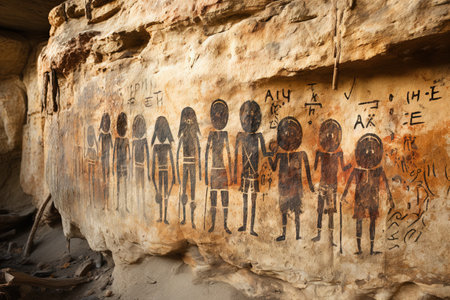
Cultural and Spiritual Significance of the Rock Art
Thai rock art bears witness to the cultural and spiritual beliefs that shaped the lives of ancient communities. These intricate paintings and carvings were not mere decorations but representations of a deeper connection to the natural world, ancestral spirits, and supernatural forces. Understanding the cultural and spiritual significance of rock art is vital to appreciating its enduring legacy and the continued resonance of these ancient beliefs in contemporary Thai society.
Connections to Ancient Thai Beliefs and Practices
The symbolism and meaning embedded in Thai rock art resonate with ancient Thai beliefs and practices that continue to shape the social fabric of the country. Traditional rituals, festivals, and religious ceremonies bear witness to the enduring influence of the ancient cosmologies and mythologies depicted in rock art. Exploring these connections allows us to trace the threads of cultural continuity and deepen our appreciation for the intricate tapestry of Thai culture.
Rock Art Sites in Thailand: Where to Explore
Thailand is home to numerous rock art sites, each offering a unique window into the ancient past. From the rugged landscapes of Northern Thailand to the central plains and the hidden treasures of Southern Thailand, there are endless opportunities for exploration and discovery. Whether you are a history enthusiast, an art lover, or simply curious about the rich tapestry of human experience, these rock art sites are bound to captivate your imagination.
Prominent Rock Art Sites in Northern Thailand
The northern region of Thailand boasts several prominent rock art sites, including Pha Taem National Park and Pha Kho Cave. These sites showcase the rich artistic heritage of the region, with paintings and carvings that depict humans, animals, and mythological figures. The breathtaking landscapes surrounding these sites further enhance the sense of awe and wonder as you delve into the ancient past.
The Remarkable Rock Art of Central Thailand
Central Thailand is home to some of the most vivid and detailed rock art in the country. Prasat Hin Khao Phanom Rung, Prasat Hin Phimai, and Tham Khao Luang are just a few of the sites that showcase the artistic prowess of ancient Thai civilizations. These sites offer a unique opportunity to immerse yourself in the grandeur and intricacy of Thailand’s rock art while appreciating the beauty of the surrounding landscapes.
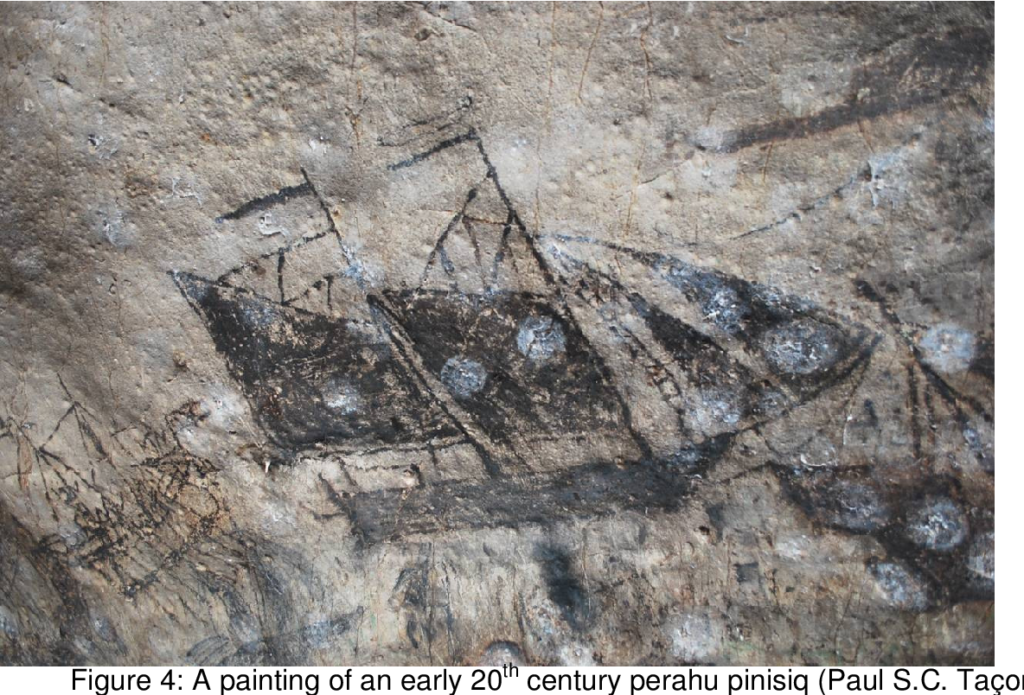
Discovering the Hidden Treasures in Southern Thailand
In the lush jungles and secluded cliffs of Southern Thailand, hidden treasures of rock art await the intrepid explorer. Sites such as Khao Yai Cave and Khao Sam Roi Yot National Park offer a glimpse into the ancient heritage of the region, with paintings and carvings that depict both familiar and mysterious figures. For those seeking a sense of adventure and a chance to uncover hidden stories, the rock art sites of Southern Thailand are a must-visit.
Preserving Thailand’s Ancient Rock Art
The preservation of Thailand’s ancient rock art faces numerous challenges and threats. The passage of centuries, natural erosion, and human activities all contribute to the gradual deterioration of these delicate masterpieces. However, concerted efforts and initiatives are being undertaken to protect and conserve these invaluable cultural treasures, ensuring that future generations can continue to marvel at the beauty and historical significance of Thailand’s rock art.
Challenges and Threats Faced by the Rock Art
The passage of time and exposure to the elements pose significant challenges to the preservation of rock art. Natural processes such as weathering, erosion, and biological growth can gradually erode and fade these ancient masterpieces. Additionally, human activities, such as vandalism, unauthorized visits, and urban development, can cause irreparable damage to the delicate sites. Identifying and addressing these challenges is crucial to ensure the long-term survival of Thailand’s rock art.
Efforts and Initiatives to Protect and Conserve the Rock Art
Recognizing the importance of Thailand’s rock art, various organizations, governmental bodies, and local communities have launched initiatives to protect and conserve these invaluable cultural treasures. Conservation efforts include the establishment of protected areas around rock art sites, implementing regulations to control access, and raising awareness among local communities and visitors about the importance of preserving these ancient artworks.
The Role of Technology in Documenting and Preserving Thai Rock Art
Technology plays a vital role in documenting and preserving Thailand’s rock art. Advanced imaging techniques, such as 3D scanning and photogrammetry, allow for detailed and accurate digital documentation of the artworks. This digital record becomes an essential resource for conservation purposes, as it provides a baseline for monitoring changes over time and allows for virtual exploration of the sites. Furthermore, technological advancements facilitate the digitization and dissemination of rock art knowledge, ensuring its accessibility to a wider audience.
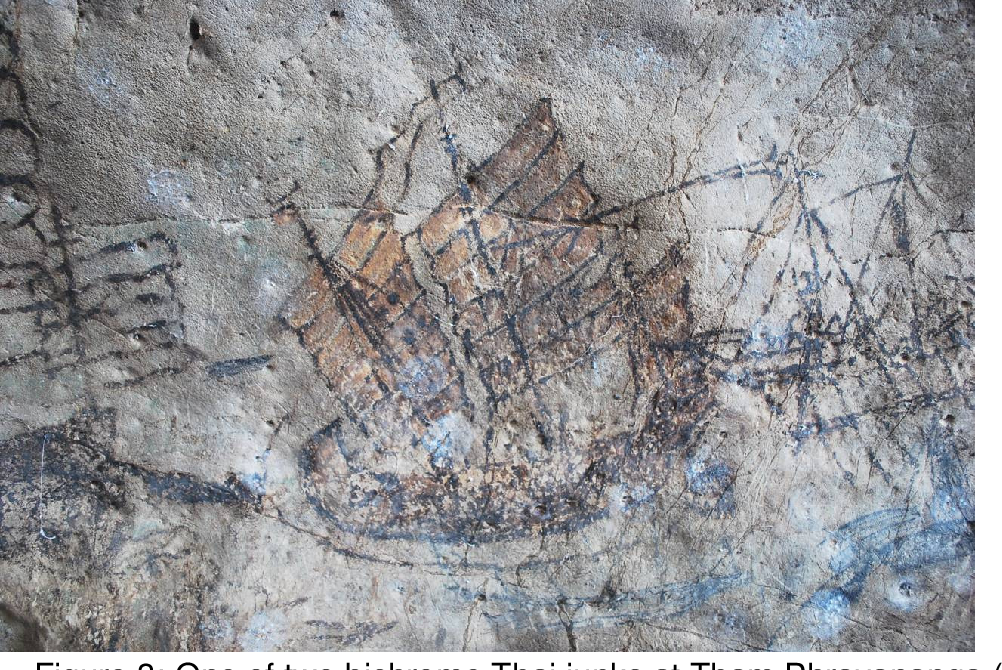
Enigmatic Traditions: The Cultural Context of Thai Rock Art
Thai rock art is not only a testament to the artistic skills and creativity of ancient communities but also a reflection of their cultural context. Understanding the cultural traditions and practices of indigenous communities provides valuable insights into the meaning and purpose of these enigmatic artworks. By exploring the connections between rock art and contemporary indigenous communities, we can shed light on prehistoric Thai cultures and the evolution of Thai society.
Linking the Rock Art to Indigenous Communities
Indigenous communities in Thailand play a crucial role in preserving and interpreting the cultural heritage associated with rock art sites. Their traditional knowledge, oral histories, and spiritual beliefs provide valuable perspectives on the symbolism and meaning of the ancient artworks. Collaborative efforts between scholars and indigenous communities help foster a deeper understanding of the cultural context of rock art and ensure that indigenous voices are heard in the preservation and interpretation of these sites.
Shedding Light on Prehistoric Thai Cultures
The study of Thai rock art offers glimpses into prehistoric cultures that thrived in the region millennia ago. By examining the depictions, symbolism, and techniques employed in the artworks, archaeologists and historians can piece together the puzzle of prehistoric Thai cultures. The insights gained from this research contribute to our understanding of the timeline of human migration, settlement patterns, and the development of cultural and social practices in Southeast Asia.
Exploring the Influence of Neighboring Civilizations
Rock art in Thailand not only reflects indigenous traditions but also bears witness to the influence of neighboring civilizations. As a crossroads of trade and cultural exchange, Thailand’s ancient communities were undoubtedly exposed to the ideas and artistic techniques of neighboring cultures such as India, China, and the Khmer Empire. By investigating these influences, we can gain a deeper understanding of the interconnected nature of ancient civilizations and their impact on the development of Thai rock art.
The Role of Rock Art in Thailand’s Tourism
Thailand’s ancient rock art has become an increasingly popular attraction for both domestic and international tourists. The unique blend of natural beauty, cultural significance, and archaeological intrigue draws visitors eager to uncover the mysteries of the past. However, balancing the demands of tourism with the need for preservation presents ethical considerations that must be carefully navigated to ensure the long-term sustainability and protection of these delicate sites.
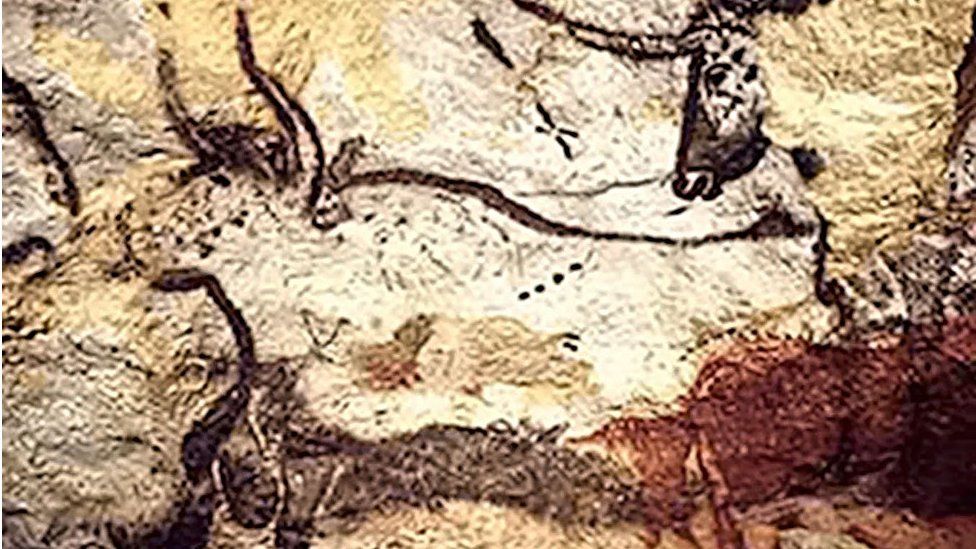
Rock Art as a Tourist Attraction: The Fascination for Visitors
The allure of Thailand’s rock art lies in its power to transport visitors to a bygone era, evoking a sense of wonder and awe. The chance to witness ancient artistic expressions firsthand, to explore the landscapes that inspired these intricate creations, and to connect with the cultural heritage of Thailand entices visitors from near and far. The presence of rock art sites provides a unique opportunity for cultural tourism, enriching the visitor experience and promoting a deeper appreciation for Thailand’s ancient history.
Ethical Considerations in Balancing Tourism and Preservation
The increasing popularity of rock art tourism raises ethical considerations regarding the impact of visitors on the fragile sites. Measures such as visitor management plans, controlled access, and educational programs can help mitigate the potential harm caused by tourism activities. Striking a balance between providing access for tourists and protecting the integrity of the rock art sites requires careful planning, regulation, and collaboration between stakeholders, including local communities, archaeological authorities, and tour operators.
Community Involvement in Sustainable Tourism of Rock Art Sites
Involving local communities in the management of rock art sites promotes sustainable tourism and ensures that the benefits of tourism are shared with the custodians of these cultural treasures. Empowering local communities to actively participate in the preservation, interpretation, and tourism development of the rock art sites fosters a sense of ownership and stewardship. Community-led initiatives, such as guided tours, cultural events, and handicraft programs, help generate economic opportunities while reinforcing the cultural significance of the rock art.
Current Research and Future Directions
Archaeological research on Thailand’s rock art is an ongoing endeavor, driven by the desire to unravel the mysteries of the past and gain a deeper understanding of the region’s ancient civilizations. Ongoing studies, discoveries, and interdisciplinary collaborations between scholars, researchers, and local communities continue to shed light on the rich tapestry of Thailand’s prehistory. The future of rock art research holds the promise of uncovering new insights and discoveries that will further enrich our understanding of Thailand’s cultural heritage.
Ongoing Archaeological Studies and Discoveries
Exciting discoveries and advancements in the field of rock art research are continuously unfolding in Thailand. Archaeologists and researchers are employing innovative techniques, such as high-resolution imaging, chemical analysis, and spatial mapping, to uncover new details and meanings hidden within the ancient artworks. Ongoing archaeological studies not only refine our knowledge of Thailand’s rock art but also contribute to broader discussions about human history, cultural diversity, and the evolution of artistic expression.
Collaborative Efforts between Scholars and Local Communities
Collaboration between scholars, researchers, and local communities plays a crucial role in advancing rock art research in Thailand. Engaging local knowledge, traditional practices, and oral histories enhances the interpretation and preservation of these ancient cultural treasures. By fostering respectful partnerships and knowledge exchange, scholars and communities alike contribute to a more comprehensive understanding of the rock art’s historical, cultural, and spiritual significance.
The Potential for Uncovering New Insights and Discoveries
The exploration of Thailand’s rock art is an exciting field of research that holds the potential for uncovering new insights and discoveries. As technologies improve, archaeological methods advance, and interdisciplinary approaches emerge, our understanding of the rock art’s meaning, context, and artistic evolution will continue to deepen. The future of rock art research promises to bring to light hidden stories and transformative knowledge that will shape our understanding of Thailand’s ancient past.
Thailand’s Rock Art and the Global Heritage
The significance of Thailand’s rock art extends beyond its national borders. As part of the global heritage, these ancient artworks contribute to our collective understanding of human history, artistic expression, and cultural diversity. They serve as a testament to the universal human impulse to create art and the enduring impact of ancient civilizations. Recognizing the global significance of Thailand’s rock art is vital for its preservation, appreciation, and for fostering international cooperation in heritage conservation.
The Significance of Thai Rock Art in the Global Context
Thai rock art holds a prominent place in the global context of ancient artistic expressions and cultural heritage. Its antiquity, diversity of styles, and enigmatic symbolism contribute to the rich tapestry of global rock art traditions. By recognizing and appreciating the cultural value and artistic merit of Thai rock art, we deepen our understanding of the interconnectedness of human cultures and the extraordinary achievements of our ancestors.
Recognition by UNESCO: Thailand’s Rock Art as World Heritage
The international recognition of Thailand’s rock art as a valuable cultural heritage is a testament to its significance and universal value. The inclusion of certain rock art sites on UNESCO’s World Heritage List acknowledges their outstanding universal significance and the need for their protection and preservation. This recognition also exposes the world to the wonders of Thai rock art, fostering mutual respect and understanding between cultures.
Preserving Rock Art Across Borders
Preserving rock art heritage transcends national boundaries, emphasizing the importance of international collaboration and cooperation. By sharing knowledge, best practices, and resources, nations can work together to safeguard the fragile rock art found within their territories. Joint efforts to protect and preserve rock art across borders ensure the long-term survival and appreciation of this invaluable cultural heritage for generations to come.
Appreciation and Impact: Thailand’s Ancient Rock Art Today
Thailand’s ancient rock art continues to inspire and impact contemporary society in multiple ways. The influence of rock art is evident in various forms of Thai art, including traditional painting, sculpture, and crafts. Moreover, educational initiatives aimed at raising awareness about rock art increase public appreciation for these cultural treasures. By inspiring the next generation of artists and researchers, Thailand’s ancient rock art ensures its enduring legacy in the hearts and minds of future generations.
The Influence of Rock Art on Thai Art and Culture
The artistic traditions and techniques depicted in Thai rock art have permeated into contemporary Thai art and culture. From traditional painting styles to intricate carvings, the echoes of the ancient past can be seen in the works of modern Thai artists. The fusion of ancient motifs and modern interpretations not only connects the present with the past but also contributes to the preservation and evolution of Thai artistic heritage.
Educational Initiatives: Teaching and Promoting Rock Art Awareness
Educational initiatives play a crucial role in promoting rock art awareness and fostering a deeper appreciation for Thailand’s ancient cultural heritage. By integrating rock art into school curricula, organizing workshops and exhibitions, and providing educational materials, children and adults alike can learn about the significance and conservation of rock art. These initiatives cultivate a sense of wonder, curiosity, and respect for the ancient traditions that have shaped Thai society.
Inspiring the Next Generation of Artists and Researchers
Thai rock art serves as an inspiration for aspiring artists and researchers, igniting curiosity and unlocking creative potential. The exploration of rock art themes in contemporary art and academic pursuits allows the next generation to delve into the mysteries of the past and reinterpret ancient traditions. By nurturing the passion and talent of young artists and researchers, Thailand’s rock art ensures its continued appreciation and contribution to the cultural tapestry of the nation.
As we embark on this journey through time, discovering the significance, meaning, and preservation efforts surrounding Thailand’s ancient rock art, we become part of a broader narrative that links the past, present, and future. The enigmatic expressions captured on the canvas of rock transport us to a world long gone, yet still vibrantly alive in the cultural fabric of Thailand. By delving into the mysteries of these ancient creations, we not only unravel the secrets of the past but also revel in the timeless beauty and profound insights they offer.
